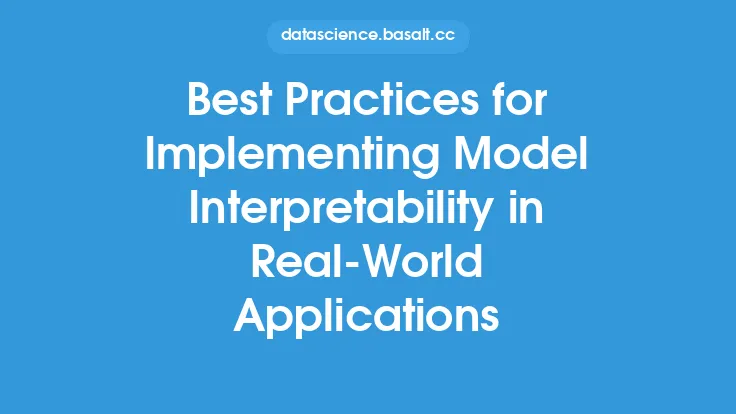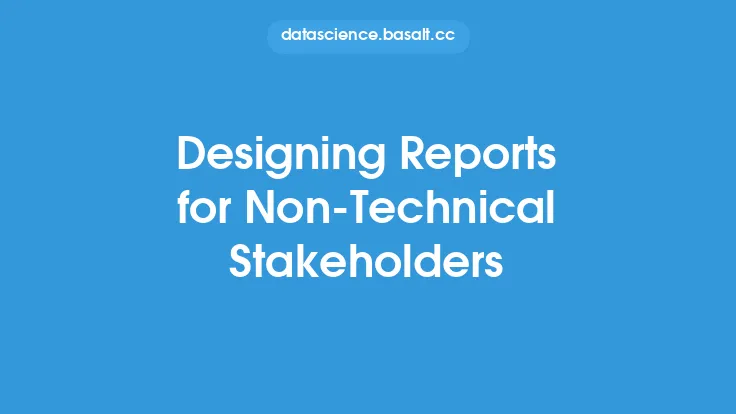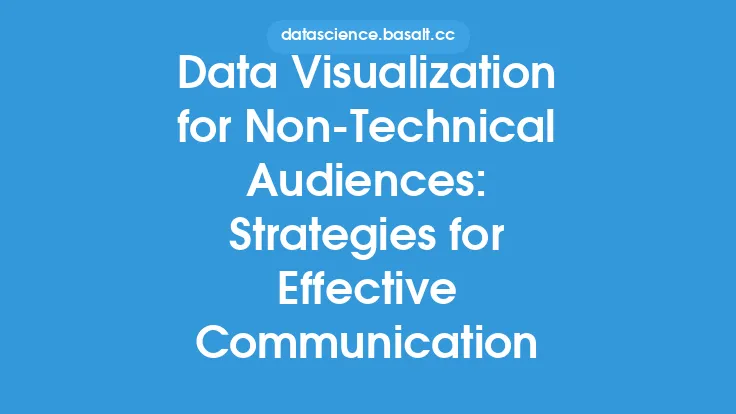As machine learning models become increasingly pervasive in various aspects of our lives, the need to understand and interpret their decisions has grown exponentially. Model interpretability techniques have emerged as a crucial tool for non-technical stakeholders to grasp the underlying mechanics of these complex systems. In this article, we will delve into the world of model interpretability, exploring its significance, techniques, and applications, with a focus on providing a comprehensive guide for beginners.
Introduction to Model Interpretability
Model interpretability refers to the ability to understand and explain the decisions made by a machine learning model. It involves analyzing the relationships between the input data, the model's parameters, and the predicted outcomes. The primary goal of model interpretability is to provide insights into the model's decision-making process, enabling stakeholders to trust and rely on the model's predictions. This is particularly important in high-stakes applications, such as healthcare, finance, and law, where the consequences of incorrect predictions can be severe.
Types of Model Interpretability Techniques
There are several types of model interpretability techniques, each with its strengths and weaknesses. These techniques can be broadly categorized into two main groups: model-specific and model-agnostic techniques. Model-specific techniques are designed for specific machine learning algorithms, such as decision trees or neural networks. Model-agnostic techniques, on the other hand, can be applied to any machine learning model, regardless of its type or architecture. Some common model interpretability techniques include:
- Feature importance: This technique assigns a score to each input feature, indicating its relative importance in the model's decision-making process.
- Partial dependence plots: These plots show the relationship between a specific input feature and the predicted outcome, while controlling for all other features.
- SHAP values: SHAP (SHapley Additive exPlanations) values are a technique for assigning a value to each feature for a specific prediction, indicating its contribution to the outcome.
- LIME: LIME (Local Interpretable Model-agnostic Explanations) is a technique for generating an interpretable model locally around a specific prediction, to approximate the original model's behavior.
Model Interpretability Techniques for Non-Technical Stakeholders
For non-technical stakeholders, model interpretability techniques can be a powerful tool for understanding and trusting machine learning models. These techniques can be used to provide insights into the model's decision-making process, without requiring a deep understanding of the underlying mathematics or algorithms. Some techniques, such as feature importance and partial dependence plots, are particularly well-suited for non-technical stakeholders, as they provide a simple and intuitive way to understand the relationships between the input data and the predicted outcomes.
Applications of Model Interpretability
Model interpretability techniques have a wide range of applications, from healthcare and finance to law and education. In healthcare, model interpretability can be used to understand the factors that contribute to a patient's diagnosis or treatment outcome. In finance, model interpretability can be used to understand the factors that contribute to a loan or credit decision. In law, model interpretability can be used to understand the factors that contribute to a judicial decision or outcome. These techniques can also be used to identify biases and errors in the model, and to improve the overall performance and reliability of the model.
Challenges and Limitations of Model Interpretability
While model interpretability techniques have the potential to revolutionize the way we understand and interact with machine learning models, there are several challenges and limitations that must be addressed. One of the primary challenges is the complexity of modern machine learning models, which can make it difficult to interpret and understand their decisions. Another challenge is the need for large amounts of data, which can be time-consuming and expensive to collect. Additionally, model interpretability techniques can be computationally intensive, requiring significant computational resources and expertise.
Best Practices for Implementing Model Interpretability
To get the most out of model interpretability techniques, it is essential to follow best practices for implementation. These include:
- Using a combination of model-specific and model-agnostic techniques to provide a comprehensive understanding of the model's decision-making process.
- Selecting techniques that are well-suited to the specific problem and dataset.
- Using visualization tools to communicate the results of model interpretability techniques to non-technical stakeholders.
- Continuously monitoring and updating the model to ensure that it remains accurate and reliable over time.
- Using model interpretability techniques to identify biases and errors in the model, and to improve the overall performance and reliability of the model.
Future Directions for Model Interpretability
As machine learning continues to evolve and improve, the need for model interpretability techniques will only continue to grow. Future directions for model interpretability include the development of new techniques and methods, such as attention mechanisms and explainable neural networks. Additionally, there is a need for more research on the applications and limitations of model interpretability techniques, as well as the development of standards and guidelines for implementation. Ultimately, the goal of model interpretability is to provide a deeper understanding of machine learning models, and to enable stakeholders to trust and rely on these models to make informed decisions.





